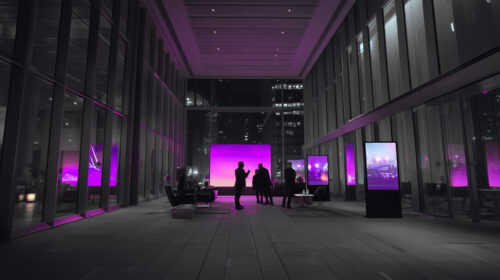The coherence of a marketing campaign is not only the visual side. It is also about the method of communication and content. AdReaction research by Kantar Millward Brown confirms that the coherence of a marketing campaign increases its effectiveness by approx. 31%.
A coherent marketing campaign – what is it?
Consistency in marketing is not just a trend, but a necessity. It has a key impact on building trust in the brand, emotional bond with the recipient and their involvement in the life and activities of the company.
Before starting a coherent marketing campaign, it is necessary to create its plan. Good, effective and engaging campaigns do not come about in one day. A marketing campaign is not just one great idea for promotion – it is a carefully planned and thought-out action, based on previous experience, specialist knowledge and current trends, implemented according to a specific goal and schedule.
A coherent marketing campaign covers various levels – visual, content and communication. Each message should complement information about the company that the recipient has already encountered in other channels. It must also be consistent with the brand’s goals and the image it wants to build.
A coherent marketing campaign contributes to:
- building a coherent and memorable company image,
- increasing the recognition and effectiveness of the message,
- increasing the effectiveness of the campaign,
- effectively communicating important content and preventing disinformation.
Marketing campaigns – types
Marketing campaigns vary depending on the distribution channel. They can be implemented in both traditional and digital media.
Marketing campaigns in traditional media
TV campaign
A TV campaign is one of the most widely available advertising channels. Although streaming platforms currently play a major role, TV campaigns are still effective and efficient. Commercials can be broadcast before, during or after a programme, and targeting is achieved by selecting the right place and time of broadcast. TV advertising is the most expensive form of a marketing campaign, which is why it is most often used by companies that have been on the market for a long time. This type of campaign significantly affects the level of brand awareness – a well-planned and engaging message can stay in the recipients’ memory for a long time.
Radio campaign
A radio campaign is a form of advertising broadcast exclusively in audio format. It is a good solution for both national and local companies. Although it is cheaper than television advertising, depending on the channel chosen, it can achieve a large reach.
It is crucial that the message of the radio campaign is catchy, simple and easy to understand, because most often they reach listeners while doing other activities, such as driving or cleaning.
Press campaign
A press campaign is a solution that is particularly recommended for marketing activities aimed at specific target groups, such as the construction, agricultural or medical industries. In this format, only a banner advertisement can be used, but there are many options for its size and placement.
Outdoor campaign
Outdoor advertising is a form of outdoor advertising, including various types of posters, banners and billboards. Currently, outdoor campaigns are on the border between traditional and digital advertising, because modern technologies enable the broadcasting of advertising content on multimedia screens, which are purchased online. Initially, these were only static creations, but today it is also possible to broadcast ads in video format.
Outdoor advertising reaches a wide audience, but its effectiveness is difficult to precisely measure. It is recommended as a supplement to campaigns conducted in other channels, e.g. television.
Direct marketing
Direct marketing is based on direct contact with the customer. Examples of such activities are telemarketing and direct mail. However, this type of advertising is associated with certain restrictions resulting from the provisions of the GDPR, especially in the context of obtaining contact data of recipients.
It is crucial that the customer base is collected in accordance with the applicable regulations. Otherwise, the company may expose itself to high financial penalties.
Event campaigns
Event campaigns are most often chosen by brands that want to increase their recognition in a specific region or among a specific group of recipients. Such activities are based on organizing events such as fairs, conferences or workshops.
This is an effective strategy for companies that want to establish a direct relationship with customers and increase brand engagement.
Digital media marketing campaigns
Display Advertising
A display campaign, or screen advertising, is a form of promotion carried out on Internet portals. It may include the emission of static banners or banners containing video or animations. Banners enriched with multimedia elements are referred to as Rich Media.
Display campaigns are most often used to increase reach and generate traffic on the target page.
SEM (Search Engine Marketing) Advertising
A SEM campaign is a paid promotion of a website in Google search results. Google Ads is used to implement this type of advertising – a tool that stands out for its high effectiveness thanks to the possibility of precise targeting.
Social Media Marketing
Social Media Marketing is advertising campaigns broadcast on social media sites such as Instagram, Facebook, LinkedIn, or TikTok. Targeting on individual platforms allows for precise selection of the target group in terms of demographics, interests, gender, or age.
E-mail marketing
E-mail marketing is a form of direct advertising using digital tools. As with traditional direct advertising, it is crucial to comply with GDPR regulations in the context of acquiring a mailing database.
E-mail marketing offers many ways to convey a message – you can use text, graphics, video or audio recordings.
This is a form of advertising that allows for direct contact with the customer, which increases the likelihood of conversion.
TV Advertising – Features, Purpose, Opportunities
TV advertising is characterized by a very wide reach and a high level of ad recall.
TV advertising is most often used to:
- reach a wide audience,
- build specific associations and emotions related to the brand,
- creatively present the brand,
- increase brand awareness,
- strengthen brand credibility,
- support sales.
A TV campaign can be broadcast in several forms:
- commercial – 15-30 s video broadcast in an advertising block,
- product placement – natural presentation of a product in a program or series,
- program sponsorship – short information about sponsoring a specific program, film or series.
TV campaigns offer many possibilities in terms of form and the type of information a brand wants to convey to its recipients. TV advertising can show:
how a product works,
- a problem that will be solved by having the product,
- a product recommended by users, which aims to strengthen credibility and present the product from the perspective of the recipient, not the manufacturer,
- a lifestyle that will be associated with the product or the moment when the recipient decides to buy it,
- a brand or product in a humorous form, which aims to amuse the recipient and build an emotional bond with them,
- animations with unrealistic characters who can become recognizable brand heroes over time.
Advertising and SM – features, purpose, possibilities
Advertising in Social Media offers many possibilities in terms of format and message. Social Media is a medium on which users spend an average of about 2 hours and 20 minutes a day. The long time of contact of the recipient with the platform means that the advertisement can reach them many times, and its level of memorization will be high.
The purpose of advertising in Social Media may be to increase reach, acquire leads, build brand recognition, or redirect traffic to the target page and then conversion (sales, use of the service, phone call).
Forms of advertising that can be used in Social Media are:
- video,
- static creation,
- carousel,
- cooperation with influencers.
A social media campaign offers opportunities such as:
- establishing direct contact with the customer, using data obtained in lead campaigns,
- showing the product in use and its characteristic features,
- education,
- increasing the credibility of the brand, product or service by cooperating with influencers who promote the product with their recommendations,
- supporting e-commerce sales,
- increasing brand recognition through reach campaigns.
Digital campaign – features, purpose, possibilities
A digital campaign is a screen advertisement, characterized by broadcasting on various types of screens, such as computers, laptops or tablets. The subsets of digital advertising also include Social Media Marketing, E-mail Marketing and SMS Marketing.
The goal of a digital campaign may be to adapt to specific brand goals, e.g. maximizing reach, conversions, increasing the level of brand recognition, engaging recipients in the brand’s activities or supporting sales. There are many possibilities for targeting the message, which makes this type of campaign recommended for many different brands and can achieve various goals.
The possibilities of digital advertising are almost endless, because this group includes any form of advertising broadcast on the screen.





